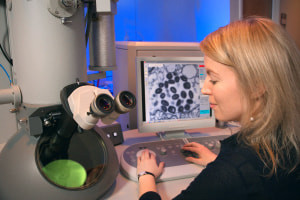Bioenergetics is the sum of the processes of transformation of external sources of energy into biologically useful work of living systems, and the process of storing and consuming the energy in the form of adenosine triphosphate (ATP). In this course, you will study bioenergetics, and how it highlights the cellular energy requirements for biofuel synthesis. The cellular carbon yield and energy efficiency, and the process of ATP formation from the electron transport chain will be discussed. The one-dimensional annotation of genome sequences will highlight the procedures for locating the open reading frames (ORFs) and assigning functions to gene products. Similarly, the two-dimensional systems will cover reaction mechanisms, regulatory networks, and signalling networks etc. You will examine the biochemical network reconstruction process and the four-level hierarchy for simplifying the conceptualization of network functions. Then, the genome-scale metabolic model and the mathematical representation of biochemical networks will be elucidated. Learn the methods for defining a network boundary, as well as the mathematical models for estimating a network map and stoichiometric matrix.
Next, discover the definition and mathematical procedures for formulating an objective function. The systems for assessing the sensitivity of the optimal properties of a network (also known as robustness analysis) will be covered. The module on phase plane analysis considers the characteristics and mathematical systems for value estimations from the four isocline regions of a metabolic network. Examine randomized sampling, and artificially centered hit and run (ACHR) procedures for characterizing and estimating the centre of a flux solution space. Likewise, the module on computational design of mutant strains will dissect optknock, optstrain, and other strain development strategies. Learn about the convex basis for the null space, elementary modes, and extreme pathways. Additionally, the 13C labelling techniques, 13C MFA formulation steps, and the challenges in 13C-assisted MFA will be highlighted. The systems for 13C fingerprinting and nonstationary metabolic flux analysis (NMFA) will be discussed. Then, the applications of metabolic engineering in microbial strain design are looked at. The module on genome editing technology highlights several genetic tools and strategies employed for gene expression modulation and metabolic pathway optimization. You will learn about promoters, ribosome binding sites (RBS), RNA-mediated gene modulation systems, etc.
Finally, the exciting features and basic timelines of CRISPR technology will be examined. Learn about the CRISPR array, the structure of the CRISPR locus, and the stages of CRISPR-Cas adaptive immunity. Also, the basis of the Cas9 engineering tool, plus the advantages of CRISPR-Cas9 over other conventional tools, is highlighted. You will be shown how to classify the chemicals produced by bioengineered microorganisms (also known as the microbial cell factories). Then, the microbial factories for hemicellulosic ethanol production in yeasts and lignocellulosic bioethanol production in E. coli will be identified. Similarly, the strategies and applications of metabolic engineering in amino acids production will be disclosed. What are the functional states of biological networks? How can the information obtained from reaction networks be presented in a mathematical framework? These questions will be addressed in this course and the practicable solutions will be revealed. If you want a career in systems biology, metabolic engineering, or related disciplines, then you will find this course exciting and rewarding. Your application of the knowledge acquired in these subjects could lead to improvements in the development of natural metabolites and products for the pharmaceutical, bioenergy, or biotechnological industries.
What You Will Learn In This Free Course
View All Learning Outcomes View Less All Alison courses are free to enrol, study, and complete. To successfully complete this Diploma course and become an Alison Graduate, you need to achieve 80% or higher in each course assessment.
Once you have completed this Diploma course, you have the option to acquire an official Diploma, which is a great way to share your achievement with the world.
Your Alison certificate is:
- Ideal for sharing with potential employers.
- Great for your CV, professional social media profiles, and job applications.
- An indication of your commitment to continuously learn, upskill, and achieve high results.
- An incentive for you to continue empowering yourself through lifelong learning.
Alison offers 2 types of Diploma for completed Diploma courses:
- Digital Diploma: a downloadable Diploma in PDF format immediately available to you when you complete your purchase.
- Physical Diploma: a physical version of your officially branded and security-marked Diploma
All Diplomas are available to purchase through the Alison Shop. For more information on purchasing Alison Diploma, please visit our FAQs. If you decide not to purchase your Alison Diploma, you can still demonstrate your achievement by sharing your Learner Record or Learner Achievement Verification, both of which are accessible from your Account Settings.











 Avg. Hours
Avg. Hours  Contains Video
Contains Video  CPD Accredited
CPD Accredited 
 Total XP:
Total XP: 
 Knowledge & Skills You Will Learn
Knowledge & Skills You Will Learn 






